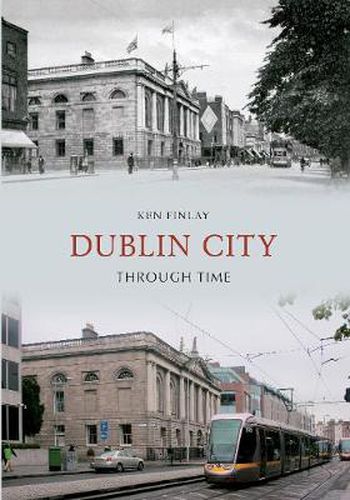Readings Newsletter
Become a Readings Member to make your shopping experience even easier.
Sign in or sign up for free!
You’re not far away from qualifying for FREE standard shipping within Australia
You’ve qualified for FREE standard shipping within Australia
The cart is loading…






While Dublin is an ancient city, its buildings are rarely more than two centuries old and the vast majority are more recent. There are, of course, exceptions - Two Cathedrals, Trinity College, and a handful of public buildings (some of which are rebuilds of destroyed structures, including the Custom House, Four Courts and GPO). O'Connell Street, at the very centre of Dublin, is almost completely reconstructed, as most of the buildings were destroyed by shelling or fire during the 1916 Easter Rising. Following independence from Britain, many inner city streets were razed as the new State moved residents from tenements to newly-built estates in the suburbs. For decades official planning policy treated central Dublin as a shopping and transport hub - for example, what eventually became Temple Bar was intended to be a vast bus station. In recent years, before the collapse of the ‘Celtic Tiger’, the pace of change grew faster, particularly along the north quays of the Liffey. Today, there is little building going on, but there is always something new, and something old, around every corner! The photographs inside this book cover a period of over a century. While the old images are largely drawn from the collection of Tony Behan, their up-to-date counterparts were photographed by Ken Finlay.
$9.00 standard shipping within Australia
FREE standard shipping within Australia for orders over $100.00
Express & International shipping calculated at checkout
While Dublin is an ancient city, its buildings are rarely more than two centuries old and the vast majority are more recent. There are, of course, exceptions - Two Cathedrals, Trinity College, and a handful of public buildings (some of which are rebuilds of destroyed structures, including the Custom House, Four Courts and GPO). O'Connell Street, at the very centre of Dublin, is almost completely reconstructed, as most of the buildings were destroyed by shelling or fire during the 1916 Easter Rising. Following independence from Britain, many inner city streets were razed as the new State moved residents from tenements to newly-built estates in the suburbs. For decades official planning policy treated central Dublin as a shopping and transport hub - for example, what eventually became Temple Bar was intended to be a vast bus station. In recent years, before the collapse of the ‘Celtic Tiger’, the pace of change grew faster, particularly along the north quays of the Liffey. Today, there is little building going on, but there is always something new, and something old, around every corner! The photographs inside this book cover a period of over a century. While the old images are largely drawn from the collection of Tony Behan, their up-to-date counterparts were photographed by Ken Finlay.